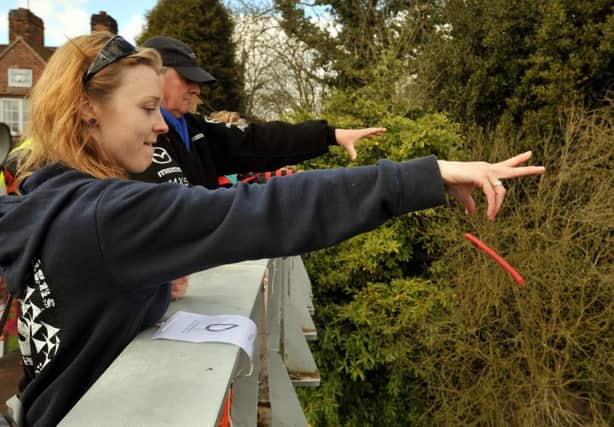Engineer’s formula for picking perfect Poohstick


The game Poohsticks, in which competitors drop sticks into a river upstream off a bridge and see which comes out first, is first mentioned in The House At Pooh Corner by AA Milne published in 1928.
The research, commissioned to celebrate the release of The Poohsticks Handbook: A Poohstickopedia – a new book featuring Winnie the Pooh and friends – reveals the secrets to finding the perfect Poohstick according to a top scientist, and names the best places in the country to play.
Advertisement
Hide AdAdvertisement
Hide AdThe formula disproves views of more than half of Britons (57 per cent) who believe Poohsticks is a game of sheer luck.
The book is written by comedy writer Mark Evans and illustrated by Mark Burgess.
Egmont Publishing joined Dr Rhys Morgan, director of engineering and education at the Royal Academy of Engineering, to equip the 39 per cent of people who already take time sourcing the perfect Poohstick with the formula to ensure they pick the speediest stick. A survey of 2,000 British parents has revealed 41 per cent of players take time to personalise their sticks to ensure they take no chances in knowing exactly who wins.
The scientist, a father of two and avid Poohsticks player himself, said the main variables that need to be considered when designing the optimum Poohstick include cross sectional area, density/buoyancy and the drag coefficient.
The perfect Poohstick is tubby and long, fairly heavy, with quite a lot of bark to catch the flow of the river like paddles - or PP (Perfect Poohstick) = A x Ï x Cd.
Cross Sectional Area (= A) is important and the greater the area of an object, the more drag it creates. Normally, a large cross-sectional area decreases speed, but when it comes to Poohsticks, drag is key. If more water is able to influence the trajectory of the stick, it will accelerate more quickly.
So when it comes to Poohsticks the tubbier, the better. The density (= Ï) of the stick affects its position in the water. The fastest part of the stream is below the surface, so theoretically a waterlogged stick which sinks a little will go faster.
The drag coefficient (= Cd) describes the shape of stick and roughness of its surface. Generally, a rough stick will create more drag than a smooth stick, so in general, bark is good.